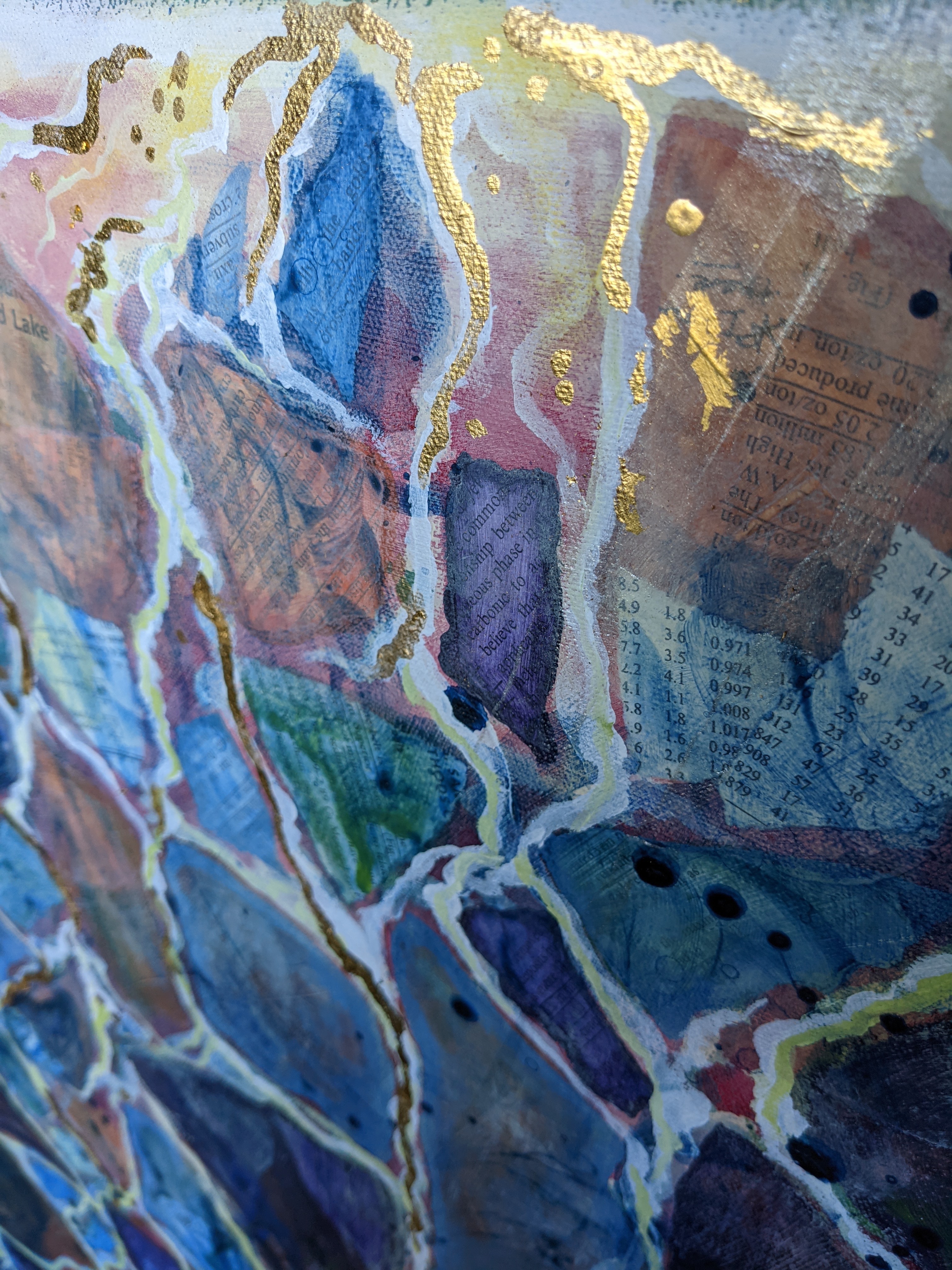Making Visible the Invisible
How Combining Autoethnography with Visual Arts Practice Unearthed More Than I Imagined
DOI:
https://doi.org/10.18432/ari29618Keywords:
autoethnography, visual arts, STEM, positionality, invisible dataAbstract
This article documents how I came to combine autoethnographic accounting with visual arts practice. I developed this mixed methods approach for my PhD study which explores the interdisciplinary possibilities offered by combining visual arts practice with STEM (science, technology, engineering, and mathematics). Visual arts practices as narrative forms tend toward the non-linear (Anae, 2014), whilst autoethnography offers self-reflection. Writing an autoethnographic account for an artwork has the potential to generate a wealth of data, some of which are visible, some of which are not. The invisible data become available only when the artist speaks to/writes about the artwork. If some content/context of a visual artwork is only visible through background information provided by the art maker, this discovery troubles another issue concerning our notions of what a good visual artwork is. Finally, I test this article’s autoethnographic authenticity against Adam’s four characteristics of autoethnography.
Downloads
Published
How to Cite
Issue
Section
License
Copyright (c) 2022 Suzanne Crowley

This work is licensed under a Creative Commons Attribution-NonCommercial-NoDerivatives 4.0 International License.
Authors who publish with Art/Research International agree to the following terms:
a. Authors retain copyright and grant the journal right of first publication and the right to sublicense the Contribution, in the form in which it is published by the journal, to others under the terms and conditions of the of the Creative Commons Attribution-NonCommercial-NoDerivs (CC BY-NC-ND) that allows others to download the work and share the work with others with an acknowledgement of the work's authorship and initial publication in this journal, but they cannot change the work in any way or use any part of the work commercially.
b. Authors are able to enter into separate, additional contractual arrangements for the non-exclusive public distribution and display of the journal's published version of the work (e.g., post it to an institutional repository or publish it in a book), with an acknowledgement of its initial publication in this journal.
c. Authors are permitted and encouraged to post their work online (e.g., in institutional repositories or on their website) prior to and during the submission process, as it can lead to productive exchanges, as well as earlier and greater citation of published work (See The Effect of Open Access).
d. Authors wishing to include items (such as images or other media, or any creative works of others whether previously published or not) must contact the original copyright holder to obtain explicit permission to publish these items in Art/Research International. Writing permission should include: the title(s) of any copyrighted work, original place of publication if applicable, and an acknowledgement of having read Art/Research International's copyright notice. Authors are responsible for obtaining this permission and keeping it in their own records for later verification.



